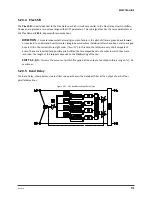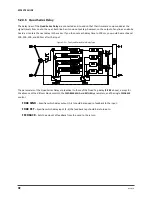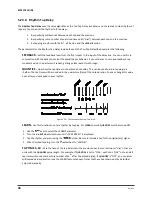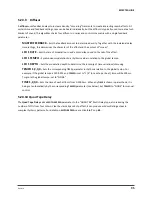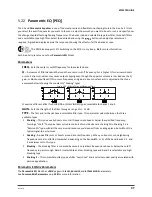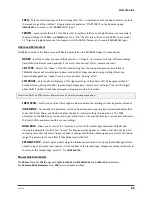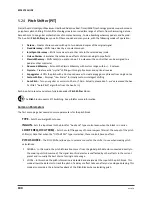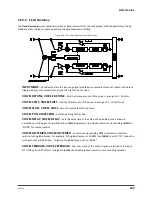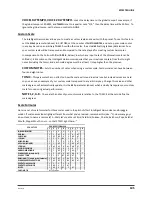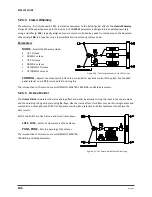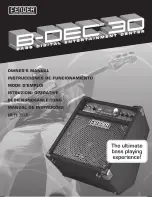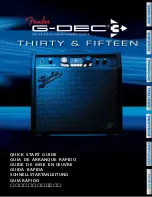
98
Doc Q7.0
Phaser [PHA]
5.23
The Phase Shifter, or
Phaser
, works by cascading a series of all-pass filters and then mixing the processed signal
with the input. This causes certain frequencies to be canceled or reinforced, creating notches and peaks. When
phase is shifted using a low-frequency oscillator (LFO), these peaks and notches sweep up and down the frequency
range to create the phaser’s distinct, hollow, swooshing sound.
The phaser in the Axe-Fx II is extremely powerful. It allows two to 12 stages to be cascaded with positive or
negative feedback and a flexible, stereo LFO. It also offers a special mode to recreate the classic ‘vibe effects with
astonishing accuracy.
The
Phaser
block supports X/Y Switching. See p.
Each Axe-Fx II preset can use two fully independent
Phaser
blocks.
Figure 5-26 – The Phaser Block
Basic Parameters
TYPE
– This sets other Phaser parameters for different useful sound settings. Types include: DIGITAL MONO,
DIGITAL STEREO, SCRIPT 45, SCRIPT 90, BLOCK 90, CLASSIC VIBE, STEREO 8-STAGE and BARBERPOLE.
RATE
– Sets the frequency of the LFO that controls the “sweep.” Set fully counterclockwise to sync to Global
LFO1 (p.
). When
RATE
is shown in parenthesis, it is being set automatically by the
TEMPO
parameter (see
below). Set the
TEMPO
to “NONE” for manual control.
DEPTH
– Sets the depth of the LFO that controls the “sweep.” Set higher for more dramatic phasing effects.
FDBK
– Feedback, also known as “regeneration” or “resonance,” controls how pronounced the peaks and
notches are. This is largely responsible for the iconic sound we associate with a Phaser.
TONE
– A simple tone control for the Phaser effect (wet only).








